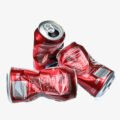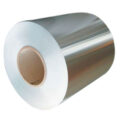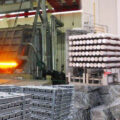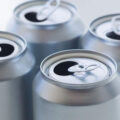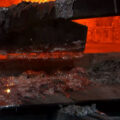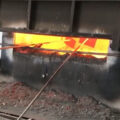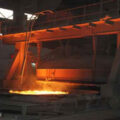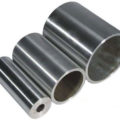Aluminum alloy application is widely used in the world, includes aluminum can, aluminum foil, etc.
Aluminum can absorb twice the crash energy of steel.
Pound for pound, aluminum absorbs twice the crash energy of steel and performs as well in an accident. Aluminum crash rails fold up like an accordion, which dissipates and directs energy away from the vehicle’s occupants. Aluminum also provides advantages in stopping distance, handling and performance.
Aluminum can be merged with special films to create flexible packaging.
Increasingly, aluminum foil is being merged with flexible films to create lightweight, flexible packages. This technology allows the packaging to expand to the shape of their contents then contract as the product is consumed.
Aluminum cans contain 3X the recycled content of glass or plastic.
Aluminum cans contain on average 73 percent recycled content — more than 3X the amount in a glass or plastic bottle. Cans are also recycled at far higher rates than competing beverage container types.

Aluminum Alloy Application
Aluminum foil provides a complete barrier to light, oxygen, moisture and bacteria.
Aluminum foil provides a complete barrier to light, oxygen, moisture and bacteria. For this reason, foil is used extensively in food and pharmaceutical packaging. Aluminum foil is also used to make aseptic packaging. This type of packaging enables storage of perishable goods without refrigeration.
Aluminum in automobiles saves 44 million tons of CO2 emissions.
Independent studies have confirmed that aluminum in automobiles has a 20 percent smaller life cycle CO2 footprint than steel. And compared with steel vehicles, a fleet of aluminum vehicles saves the equivalent of 44 million tons of CO2 emissions.
Aluminum wire and conduit does not spark.
Unlike wire conduit made from steel, rigid aluminum does not spark, resists corrosion and will not rust. These properties of aluminum are vitally important for electrical applications within coal mines, grain elevators and refineries (where the sparking can lead to catastrophic outcomes).
Coated aluminum roofs reflect up to 95 percent of sunlight.
Aluminum is superior to steel and iron in its ability to reflect the infrared (heat) rays of the sun. Properly coated aluminum roofs can reflect up to 95 percent of the solar energy that strikes them, dramatically improving energy efficiency. Aluminum is a key component in LEED-certified green buildings.



